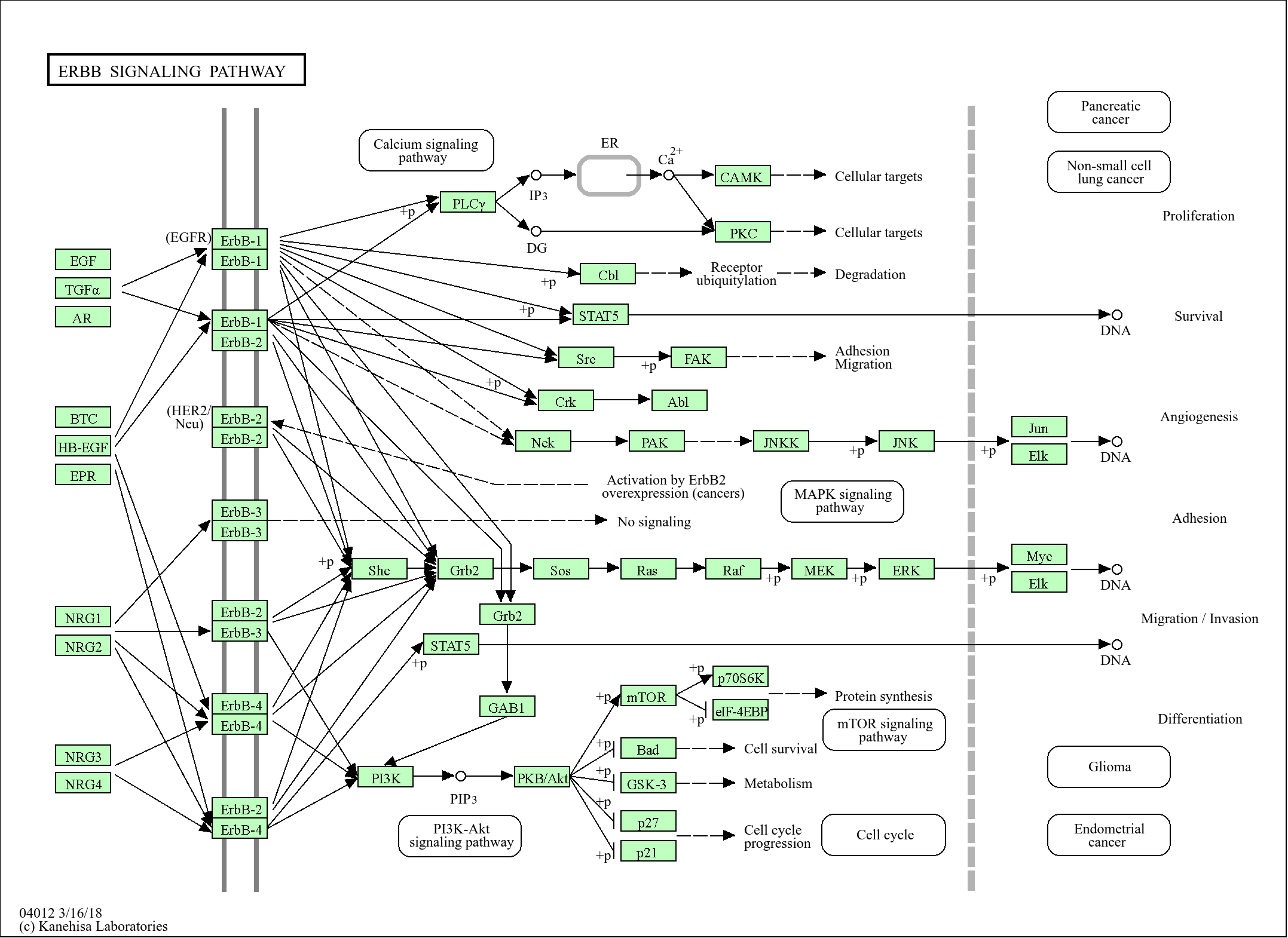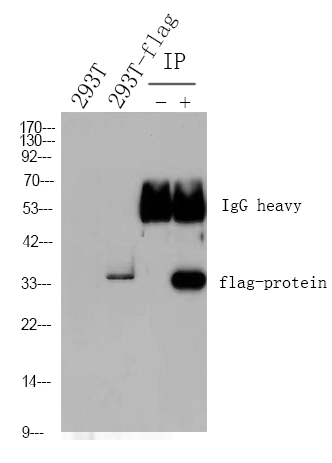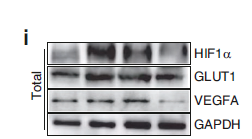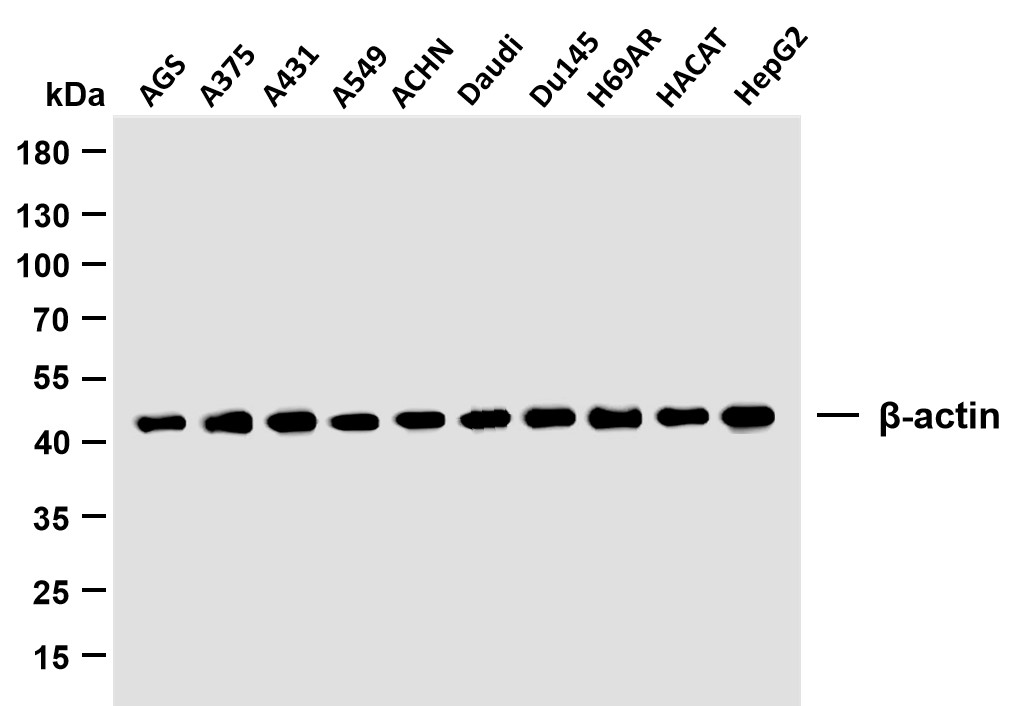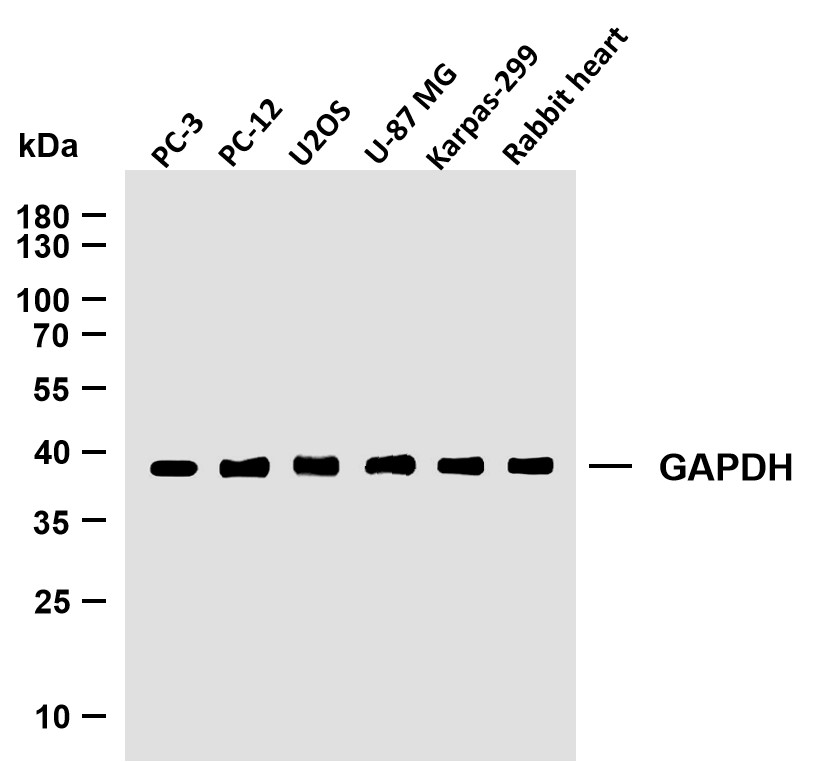
Catalog: YT5573
Size
Price
Status
Qty.
200μL
$450.00
In stock
0
100μL
$280.00
In stock
0
40μL
$150.00
In stock
0
Add to cart


Collected


Collect
Main Information
Target
GHR
Host Species
Rabbit
Reactivity
Human, Mouse, Rat
Applications
WB, ELISA
MW
140kD (Observed)
Conjugate/Modification
Unmodified
Detailed Information
Recommended Dilution Ratio
WB 1:500-1:2000; ELISA 1:10000; Not yet tested in other applications.
Formulation
Liquid in PBS containing 50% glycerol, 0.5% BSA and 0.02% sodium azide.
Specificity
GHR Polyclonal Antibody detects endogenous levels of GHR protein.
Purification
The antibody was affinity-purified from rabbit antiserum by affinity-chromatography using epitope-specific immunogen.
Storage
-15°C to -25°C/1 year(Do not lower than -25°C)
Concentration
1 mg/ml
MW(Observed)
140kD
Modification
Unmodified
Clonality
Polyclonal
Isotype
IgG
Related Products
Antigen&Target Information
Immunogen:
The antiserum was produced against synthesized peptide derived from the N-terminal region of human GHR. AA range:21-70
show all
Specificity:
GHR Polyclonal Antibody detects endogenous levels of GHR protein.
show all
Gene Name:
GHR
show all
Protein Name:
Growth hormone receptor
show all
Other Name:
GHR ;
Growth hormone receptor ;
GH receptor ;
Somatotropin receptor
Growth hormone receptor ;
GH receptor ;
Somatotropin receptor
show all
Database Link:
Background:
This gene encodes a member of the type I cytokine receptor family, which is a transmembrane receptor for growth hormone. Binding of growth hormone to the receptor leads to receptor dimerization and the activation of an intra- and intercellular signal transduction pathway leading to growth. Mutations in this gene have been associated with Laron syndrome, also known as the growth hormone insensitivity syndrome (GHIS), a disorder characterized by short stature. In humans and rabbits, but not rodents, growth hormone binding protein (GHBP) is generated by proteolytic cleavage of the extracellular ligand-binding domain from the mature growth hormone receptor protein. Multiple alternatively spliced transcript variants have been found for this gene.[provided by RefSeq, Jun 2011],
show all
Function:
Disease:Defects in GHR are a cause of Laron dwarfism [MIM:262500]; also known as pituitary dwarfism II; Laron-type pituitary dwarfism I (LTD1) or Laron syndrome (LS). It is the most severe form of growth hormone insensitivity (GHI) characterized by growth impairment, dysmorphic facial features and truncal obesity. Levels of GHBP are low or undetectable in patients with Laron syndrome.,Disease:Defects in GHR may be a cause of short stature [MIM:604271]. Short stature is defined by a subnormal rate of growth.,Domain:The box 1 motif is required for JAK interaction and/or activation.,Domain:The extracellular domain is the ligand-binding domain representing the growth hormone-binding protein (GHBP).,Domain:The ubiquitination-dependent endocytosis motif (UbE) is required for recruitment of the ubiquitin conjugation system on to the receptor and for its internalization.,Domain:The WSXWS motif appears to be necessary for proper protein folding and thereby efficient intracellular transport and cell-surface receptor binding.,Function:Isoform 2 up-regulates the production of GHBP and acts as a negative inhibitor of GH signaling.,Function:Receptor for pituitary gland growth hormone involved in regulating postnatal body growth. On ligand binding, couples to the JAK2/STAT5 pathway.,Function:The soluble form (GHBP) acts as a reservoir of growth hormone in plasma and may be a modulator/inhibitor of GH signaling.,polymorphism:Genetic variation in GHR may act as phenotype modifier in familial hypercholesterolemia [MIM:143890] patients carrying a mutation in the LDLR gene.,PTM:On GH binding, phosphorylated on tyrosine residues in the cytoplasmic domain by JAK2.,PTM:On ligand binding, ubiquitinated on lysine residues in the cytoplasmic domain. This ubiquitination is not sufficient for GHR internalization.,PTM:The soluble form (GHBP) is produced by phorbol ester-promoted proteolytic cleavage at the cell surface (shedding) by ADAM17/TACE. Shedding is inhibited by growth hormone (GH) binding to the receptor probably due to a conformational change in GHR rendering the receptor inaccessible to ADAM17.,similarity:Belongs to the type I cytokine receptor family. Type 1 subfamily.,similarity:Contains 1 fibronectin type-III domain.,subcellular location:On growth hormone binding, GHR is ubiquitinated, internalized, down-regulated and transported into a degradative or non-degradative pathway.,subcellular location:Remains fixed to the cell membrane and is not internalized.,subunit:On growth hormone (GH) binding, forms homodimers and binds JAK2 via a box 1-containing domain (By similarity). Binding to SOCS3 inhibits JAK2 activation, binding to CIS and SOCS2 inhibits STAT5 activation (By similarity). Interacts with ADAM17.,tissue specificity:Expressed in various tissues with high expression in liver and skeletal muscle. Isoform 4 is predominantly expressed in kidney, bladder, adrenal gland and brain stem. In the placenta, isoform 1 predominantly expressed in chorion and decidua, isoform 4 highly expressed in villi. Isoform 2 is expressed in lung, stomach and muscle. Low levels in liver.,
show all
Cellular Localization:
Cell membrane; Single-pass type I membrane protein. On growth hormone binding, GHR is ubiquitinated, internalized, down-regulated and transported into a degradative or non-degradative pathway. .; [Isoform 2]: Cell membrane; Single-pass type I membrane protein. Remains fixed to the cell membrane and is not internalized.; [Growth hormone-binding protein]: Secreted. Complexed to a substantial fraction of circulating GH. .
show all
Research Areas:
>>Cytokine-cytokine receptor interaction ;
>>Neuroactive ligand-receptor interaction ;
>>PI3K-Akt signaling pathway ;
>>JAK-STAT signaling pathway ;
>>Growth hormone synthesis, secretion and action
>>Neuroactive ligand-receptor interaction ;
>>PI3K-Akt signaling pathway ;
>>JAK-STAT signaling pathway ;
>>Growth hormone synthesis, secretion and action
show all
Signaling Pathway
Organismal Systems >> Endocrine system >> Growth hormone synthesis, secretion and action
Environmental Information Processing >> Signal transduction >> JAK-STAT signaling pathway
Environmental Information Processing >> Signal transduction >> PI3K-Akt signaling pathway
Environmental Information Processing >> Signaling molecules and interaction >> Cytokine-cytokine receptor interaction
Reference Citation({{totalcount}})
Catalog: YT5573
Size
Price
Status
Qty.
200μL
$450.00
In stock
0
100μL
$280.00
In stock
0
40μL
$150.00
In stock
0
Add to cart


Collected


Collect
Recently Viewed Products
Clear allPRODUCTS
CUSTOMIZED
ABOUT US
Toggle night Mode
{{pinfoXq.title || ''}}
Catalog: {{pinfoXq.catalog || ''}}
Filter:
All
{{item.name}}
{{pinfo.title}}
-{{pinfo.catalog}}
Main Information
Target
{{pinfo.target}}
Reactivity
{{pinfo.react}}
Applications
{{pinfo.applicat}}
Conjugate/Modification
{{pinfo.coupling}}/{{pinfo.modific}}
MW (kDa)
{{pinfo.mwcalc}}
Host Species
{{pinfo.hostspec}}
Isotype
{{pinfo.isotype}}
Product {{index}}/{{pcount}}
Prev
Next
{{pvTitle}}
Scroll wheel zooms the picture
{{pvDescr}}

